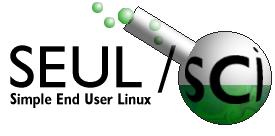
 |
Linux in science report #3 |
|---|
| Previous Report | Reports Page | Next Report |
|---|
DiaDia is a drawing program, similar to Visio, and supports a large variety of diagram types. It currently has support for entity-relationship diagrams, UML diagrams, flowcharts, network and simple circuit diagrams.Dia can export diagraphs to EPS or SVG formats and can print diagrams spanning several pages. More info can be found on the Dia site at http://www.lysator.liu.se/~alla/dia/
Grace: UpdateVersion 5.1.0 of the Grace WYSIWYG 2d plotting tool for X has recently been released. Grace supports a number of graph types, and also supports FFT, integration and differentiation, splines, interpolation and smoothing, linear and non-linear least-squares curve-fitting amongst others.It can output to several different graphics formats (including PS, PDF, MIF, SVG, PNM, JPEG and PNG) as well, and the gallery page shows how flexible this package is. Grace can be found at http://plasma-gate.weizmann.ac.il/Grace/ .
GRASS GISThe Geographic Resource Analysis Support System - GRASS is a GPL'ed Geographical Information System (GIS) with raster (grid-based) and vector (line-based) analysis and display capabilities, image processing as well as graphics presentation capability. GRASS is a venerable UNIX application, having its roots in the US Army Construction Engineering Research Laboratory (CERL). The sixth beta version of GRASS release 5 is now available though either of the two main sites or any mirror.GRASS has LOTS of documentation - I've downloaded and printed the PDF manuals already, and at the time they filled a binder. The docs are fairly well laid out and clear. GRASS has a number of extensions available, including interfaces to the PostGres relational database, R statistics program, and the N-VIS 3-d visualization interface (also available at the GRASS site).
Main US Site: http://www.baylor.edu/~grass/
GNU Triangulated Surface LibraryStephane Popinet from the Laboratoire de Modelisation en Mechanique in Paris wrote:I read with interest your "Linux in science report #2". You might be interested by GTS (the GNU Triangulated Surface Library). It is intended to be a library for robust (i.e. insensitive to floating point rounding errors) operations (including union, intersection, difference, etc ...) on 3D volumes defined by triangulated surfaces.GTS is a C-based library (published under the LGPL) which uses a simple OO structure to give easy access to topological properties, metric operations such as area and volume, as well as constrained and 2D delaunay triangulation. The GTS site at http://gts.sourceforge.net has quite a bit of documentation, as well as some pretty amazing screenshots.
NightfallFrom the Nightfall web page at http://www.lsw.uni-heidelberg.de/~rwichman/Nightfall.html:"Nightfall is an astronomy application for fun, education, and science. It can produce animated views of eclipsing binary stars, calculate synthetic lightcurves and radial velocity curves, and eventually determine the best-fit model for a given set of observational data of an eclipsing binary star system.
Python and Scientific ComputingA good overview of the tools currently available for scientific computing using Python can be found at the PyScience site at http://www.python.org/topics/scicomp/Currently, the site seems to focus on tools for multidimensional array operations and visualization tools. Links to these and other programs can be found on the site. Some links to documentation are found as well.
NumPy: Numerical Python ProjectAnother numerical project involving Python: the Numerical Python Project provides a rapid and compact multidimensional array language extension to Python.I have to admit here being a bit surprised by the extensive documentation provided, in the form of a 95-page PDF explaining the installation and use of "NumPy. A quick look at the doc shows a wide variety of array manipulation tools, info on interfacing to external C programs, as well as references for the Linear algebra and FFT tools. The NumPy Project can be found at http://numpy.sourceforge.net/
XGobi/XGvisXGobi is a visualization program for multivariate data, and XGvis is described as "a system for multidimensional scaling.and graph layout in any dimension." Often, data analysis using a procedural approach (ie. analysing based on procedures alone) will miss important relationships. These programs allow the user to visually interact with the dataset, enabling the researcher to more readily find hidden relationships.Both XGobi and XGvis can work with the R Statistics program; R's XGobi library will add script-based calls to let the user explore an R dataset in XGobi.
Both of these can be found at http://www.research.att.com/~andreas/xgobi/
-- Pete St. Onge (pete@seul.org) |
| Previous Report | Reports Page | Next Report |
|---|
| Please report any technical problems to webmaster@seul.org. |